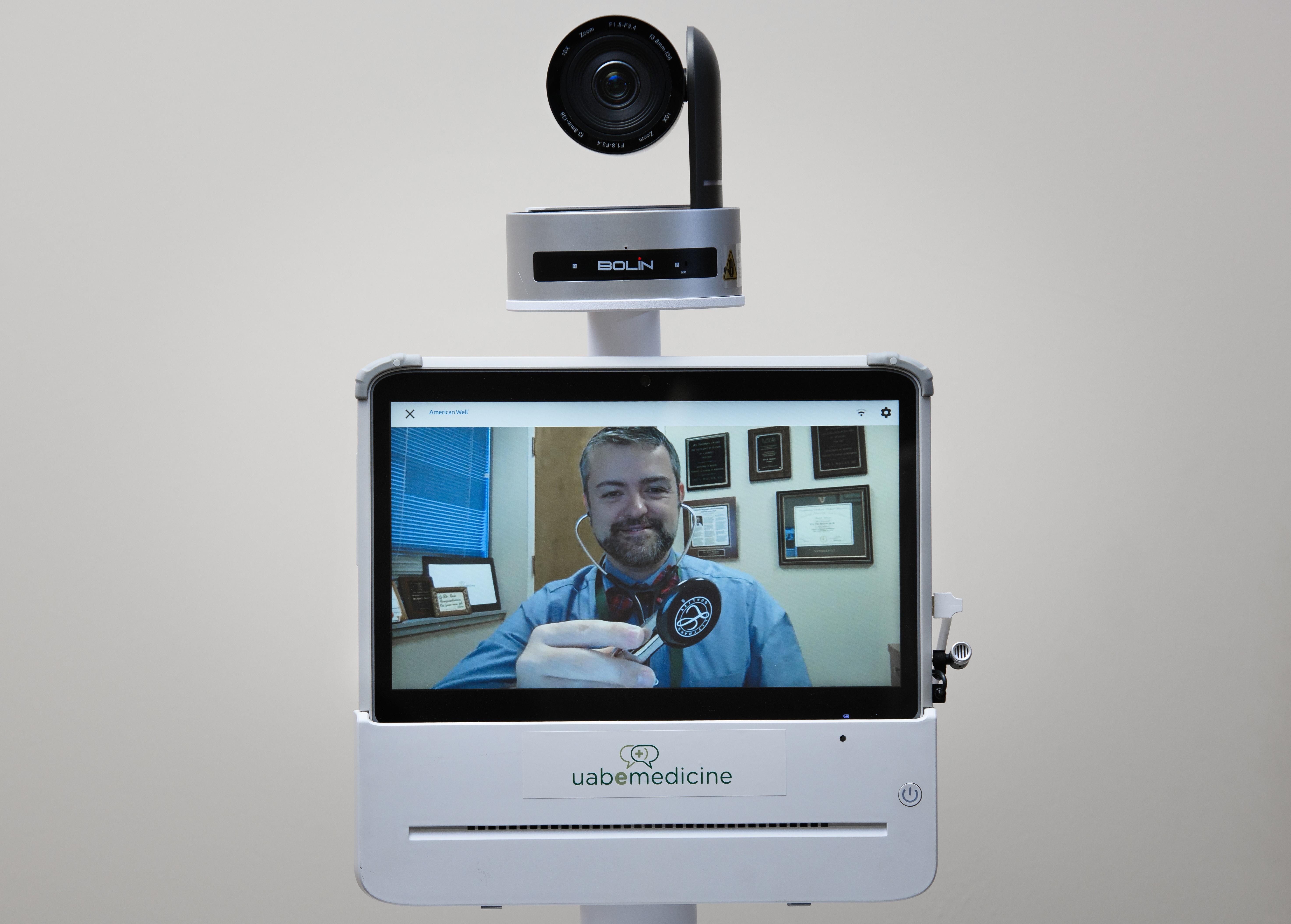Telehealth was helpful for Stults, who has had a lot of health emergencies, long before the pandemic started. The 47 year-old uses telehealth as a way to give himself peace of mind in between his monthly in-person visits.
“All we do is just answer questions like if I'm doing okay, or if I have swelling in my legs or if my sight is okay,” Stults said.
Stults’ doctor, nephrologist Eric Wallace from the University of Alabama at Birmingham, started a telehealth program for his rural patients in 2015. The school worked with the Alabama Department of Health to set up remote video-conferencing centers at rural health departments in different counties across the state.
Stults is familiar with technology and said it was not hard for him to go to these county sites, but even when telehealth is offered, that does not mean disparities automatically go away.
Wallace says telehealth — particularly the kind that is delivered in a patient’s home — is necessary and helpful for some patients who want to receive some of their medical care that way. But it’s not always convenient, and other patients have faced a lot of hurdles.
“Number one is, ‘I don't have the money for a phone or I don’t have a phone,’” Wallace said.” Number two is, ‘I don't have internet, or I don’t have the money to pay for it.’ This is probably the most common.
“Number three is, ‘I have a phone. I have the money to buy internet. But I don't know how to use it.’”
According to 2018 Census data, 1 in 4 rural residents across the Gulf South lack a subscription to the internet. Across the U.S., that average is 1 in 5.
Wallace says some studies show patients who would skip out on seeing the doctor altogether could be more likely to get medical attention if telemedicine is an option. Others might want to go to the doctor and just need help with transportation or getting insurance. But telehealth cannot and should not be used for all types of care, Wallace said.
“For dialysis care, patients have to come in once a month,” he said. “They have to get labs. And so my telehealth was always about giving patients choice.
“For me, telehealth doesn't necessarily mean I'm going to do a better job. It’s about how I want my patients to have the best quality of life.”




